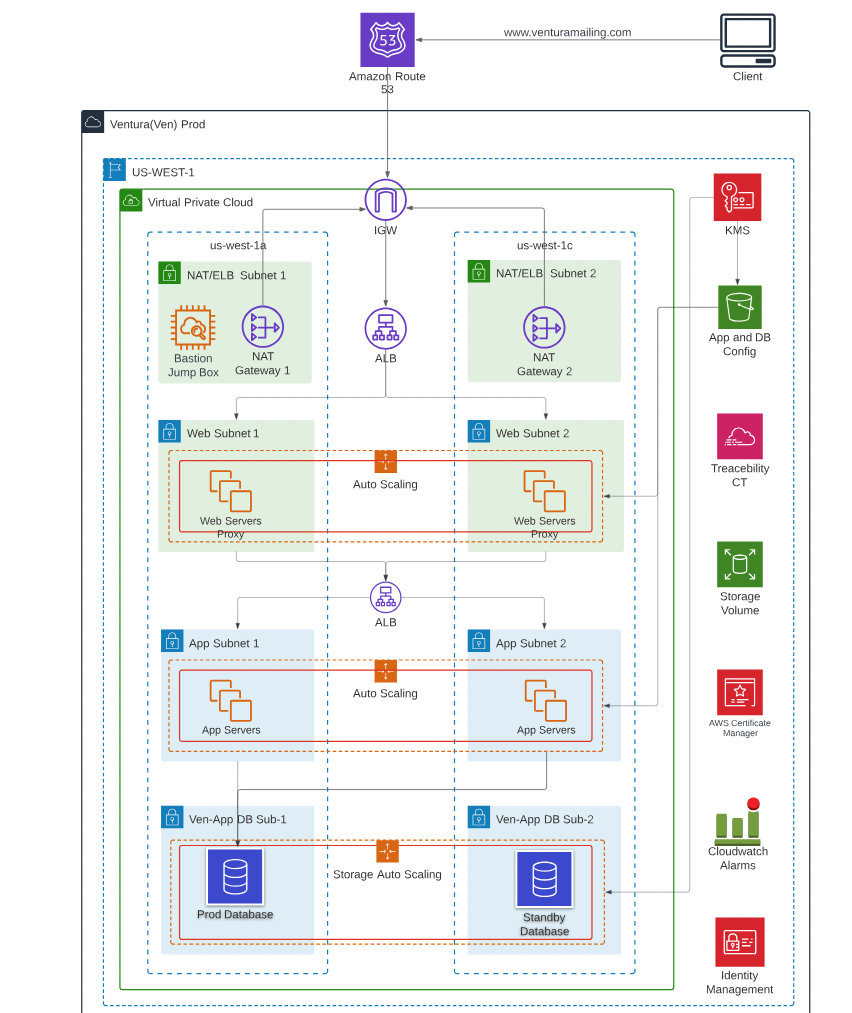Project information
- Category: Web Design
- Client: JJtech Inc
- Project date: 23 August, 2020
- Project URL: Ventura Achitecture
High-Availability Architecture
IntroductionIn my pursuit of building robust and scalable cloud infrastructures, I've designed a 4-tier architecture that exemplifies high availability, fault tolerance, and scalability. Leveraging the power of Terraform, I've orchestrated this architecture to meet the demands of modern, dynamic applications.
Architecture OverviewTier 1: Load Balancers and DNS Routing At the forefront of this architecture are two high-availability load balancers strategically placed across different Availability Zones (AZs). These load balancers ensure even distribution of incoming traffic and serve as the entry point for user requests. Coupled with Route 53, I've established DNS routing that intelligently directs traffic to the most available and responsive instances.
Tier 2: Auto-Scaling Web Servers Behind the load balancers, a fleet of auto-scaling web servers are deployed. These instances are configured to dynamically scale based on predefined metrics, such as CPU utilization or incoming traffic. This ensures that the application can handle sudden spikes in load without compromising performance.
Tier 3: Application Servers and Microservices The next layer comprises a cluster of application servers and microservices. These are responsible for processing business logic, interacting with databases, and executing tasks as part of the application's core functionality. Deployed across multiple Availability Zones, they guarantee redundancy and failover capabilities.
Tier 4: Database Cluster At the foundation of the architecture lies a highly available and fault-tolerant database cluster. Leveraging managed services like Amazon RDS, I've ensured that data is stored securely, with automated backups and failover mechanisms in place.
Key Features:
- Multi-AZ Deployment: Each tier is deployed across multiple Availability Zones to ensure redundancy and fault tolerance. In the event of a failure, traffic is automatically redirected to healthy resources.
- Auto Scaling: The web server tier and application servers/microservices are configured for auto-scaling, allowing the architecture to dynamically adapt to varying workloads.
- Managed Database Services: By utilizing managed database services, I've offloaded operational overhead, allowing for focus on application development rather than database maintenance.
- as Code with Terraform:The entire architecture is defined and provisioned using Terraform, enabling version control, reproducibility, and easy scalability.
- Security and Compliance: Security groups, IAM roles, and other AWS security features are meticulously configured to ensure data integrity and compliance with industry standards.
This 4-tier architecture showcases my proficiency in designing and implementing high availability, scalable, and fault-tolerant cloud infrastructures. With Terraform as the orchestrator, I've demonstrated the power of Infrastructure as Code in building modern, dynamic applications.
If you're interested in learning more about this architecture or discussing potential implementations for your projects, please feel free to get in touch.


